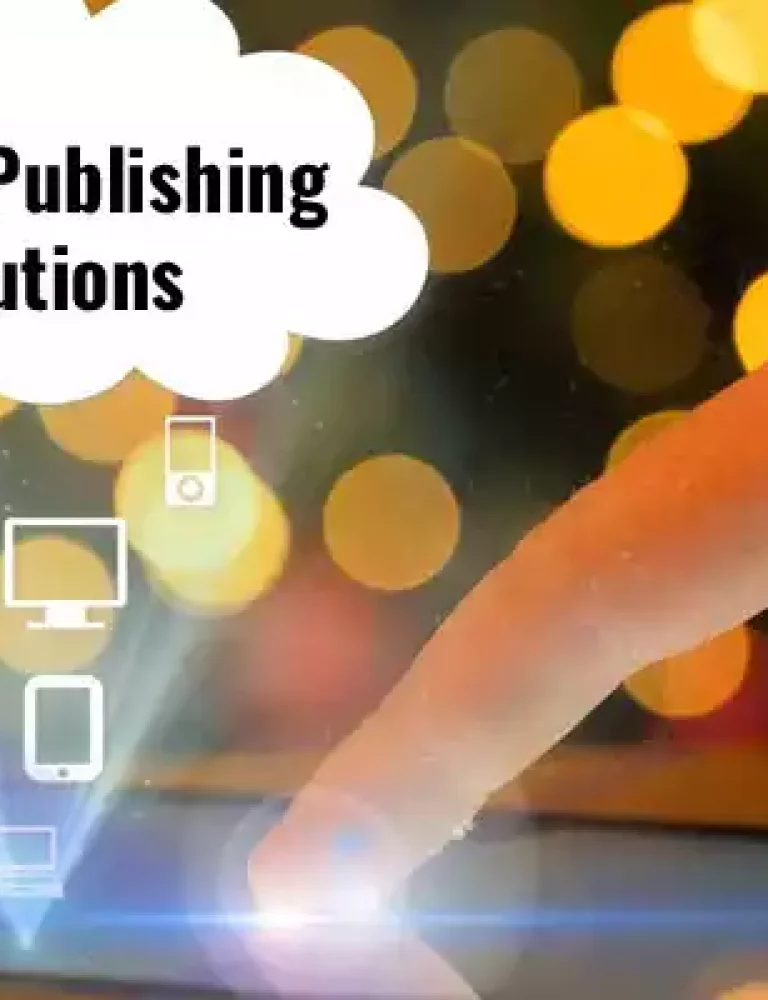The popularity of eBooks is on the rise because of the convenience they offer to readers. Furthermore, the augmented capabilities like read aloud and contrast adjustments make them even more likeable.
The features that you can incorporate into your eBooks actually depend on the format you choose for them. For example, eBooks created using ePUB formats have expanded capabilities as compared to PDF based eBooks. However, PDF based eBooks have certain qualities of their own that are more feasible in some scenarios (for example, for higher accessibility.)
In this blog post, you will read about what ePUB and PDF formats are, their differences, and their capabilities. You will be able to make an informed choice by the end.
Table of Contents
III. Exploring Differences Between ePUB and PDF
IV. Common Capabilities of ePUB and PDF
Understanding ePUB and PDF
Both ePUB and PDF are formats for eBooks.
The ePUB format, short for Electronic Publication, is a highly capable eBook format that can store information in the form of images, fonts, text, tables of contents, and even interactive elements. It is the most widely used format across a variety of eReader platforms, such as KITABOO. Such platforms also provide users with the capability to manage distribution rights, licensing, and intellectual property management through DRM (Digital Rights Management) tools.
On the other hand, PDF stands for Portable Document Format, and it is a file that is capable of storing text and media. It is a highly accessible file format that does not require special software for compatibility. Any device can open a PDF file.
What is DRM?
ePUB and DRM
ePUB supports DRM through various methods, allowing publishers to encrypt their eBooks and control access. Popular DRM systems for ePUB include Adobe DRM and Apple FairPlay. These systems enable publishers to set permissions, such as limiting the number of devices a book can be downloaded to or restricting copying and printing.
PDF and DRM
PDF also offers DRM capabilities, but they’re often less standardized compared to ePUB. Adobe Acrobat, for example, provides DRM options for PDFs, allowing publishers to apply password protection, encryption, and access controls.
However, PDF DRM solutions may not offer the same level of flexibility and compatibility across different devices and platforms as ePUB DRM solutions.
Exploring Differences Between ePUB and PDF
There are quite a few differences between ePUB and PDF eBook formats:
File Size
File size is one of the major points of difference between the two formats. Typically, a PDF based eBook is heavier than its ePUB counterpart. This is because ePUB formats use zipped files and HTML to be processed, which makes them lighter. On the other hand, PDF files save the direction of all the information like characters, fonts, etc.
Printing
If you want to create eBooks that are more readily printable, PDF formats are the right choice. The best part is that the printed version of the PDF based eBook looks the same as the digital version.
However, ePUB eBooks contain flowable text that is responsive to screen sizes, which makes it a longer journey to be printed.
Reading View
ePUB based eBooks contain reflowable text, which means that the interface is responsive to the size of the screen it is viewed on. This drastically enhances the reading experience for the readers.
However, PDF based eBooks are not responsive. It may be tougher to read them properly on smaller screens.
Editing Capabilities
When it comes to editing your eBooks, you may find that PDF editors are easier to use and have a relatively flatter learning curve. You can begin editing right from the reader interface and save your changes.
However, with ePUB, the editing process takes a little longer and requires you to open an entirely new interface to apply the changes.
Rich Media Integration
ePUB based eBooks provide better integration capabilities for multimedia like videos, audio, interactive content, gamified modules, and animation. While PDF does support images and embedded links, there is little else that can be added to these files. This is what makes ePUB based files more popular with eBook publishing houses, especially keeping in mind the modern requirements for a high engagement rate.
Common Capabilities of ePUB and PDF
Despite the various differences, there are several aspects that ePUB and PDF formats share. When making a decision to choose one format, keep these in mind:
Engagement
Whether you select ePUB format or PDF, both of these formats provide you with enough features to enhance reader engagement in the book. For example, ePUBs can be used to introduce interactive elements, whereas PDFs can be used as a more formal mode of publication, providing well-structured links to citations.
Compatibility
The compatibility and accessibility of both eBook formats are tremendous. They can be used with a wide variety of platforms. Some digital textbook platforms are compatible with both formats (ePUB and PDF), making them highly accessible with the use of a single app download. This capability makes them an excellent choice for creating eBooks.
Versatility
Both ePUB and PDF formats for eBooks are extremely versatile. They can support a wide variety of data in different modes, like text, images, URLs, audio, etc. This enables them to be flexible enough to be repurposed to any end, whether for educational or entertainment content or any other kind of content.
Security and Protection
Whether you choose PDF or ePUB, both formats provide multiple layers of protection through passwords, multi factor authentication, and even OTP-based verification for access. When associated with a robust textbook platform like KITABOO, it is possible to provide further security measures like login encryptions and Single Sign-Ons.
Choosing the Right Format and DRM
Consider Compatibility
When deciding between ePUB and PDF, consider their compatibility with your target audience’s devices and preferences. If your audience primarily uses eReaders or mobile devices, ePUB may be the better choice due to its responsive design.
However, if maintaining the layout integrity of your content is paramount, PDF might be more suitable.
Evaluate DRM Needs
Assess your DRM requirements based on the sensitivity and value of your content. If you’re publishing proprietary or copyrighted material, robust DRM protection is essential to prevent unauthorized distribution and piracy.
Look for DRM solutions that align with your security needs and offer seamless integration with your chosen format.
KITABOO: eBooks in Any Format
Both eBook formats—ePUB and PDF—are extremely handy and accessible. The capabilities they bring to the table far surpass the experience of reading simple digital eBooks. Managing rights and security is equally important, which becomes smoother with robust digital textbook platforms like KITABOO.
KITABOO provides an end-to-end solution for eBook creators to not just create and enrich their eBooks in both ePUB and PDF formats, but also protect them using the robust and dedicated DRM module on the platform.
To understand KITABOO’s file format capabilities and security measures, visit the website.
Discover How An Ebook Conversion, Publishing & Distribution Platform Can Help You
Kitaboo is a cloud-based content platform to create-publish & securely distribute interactive mobile-ready ebooks.
You May Also Like








